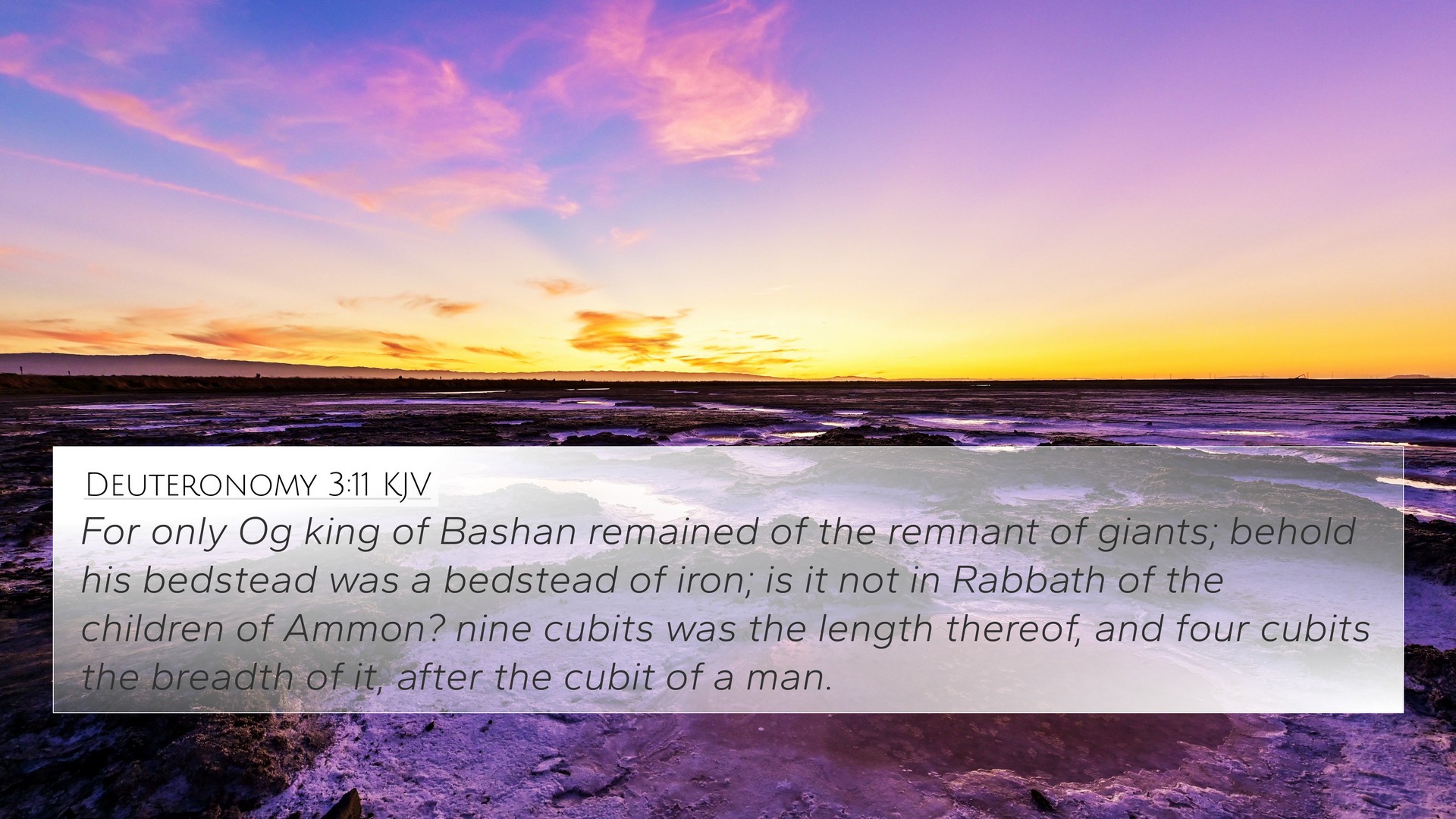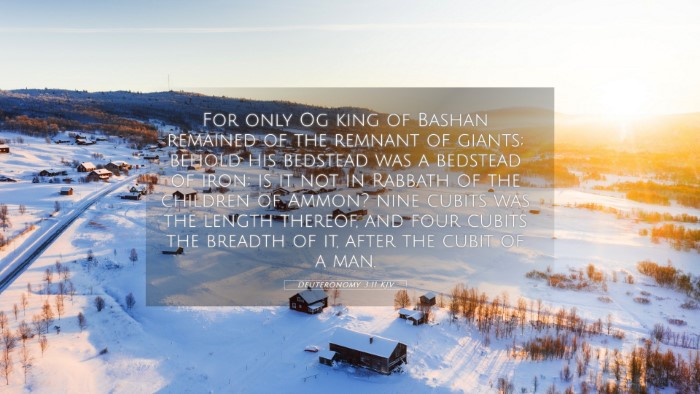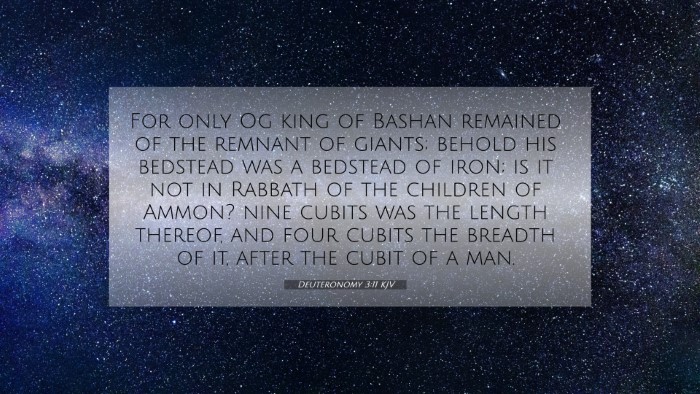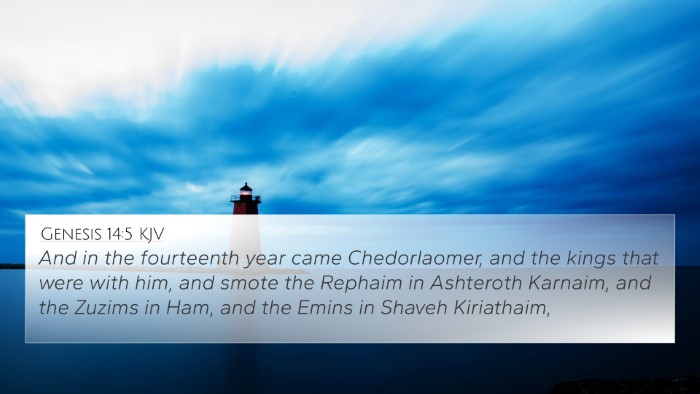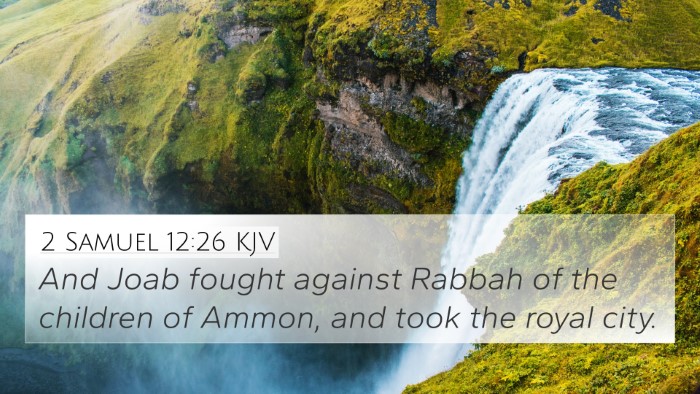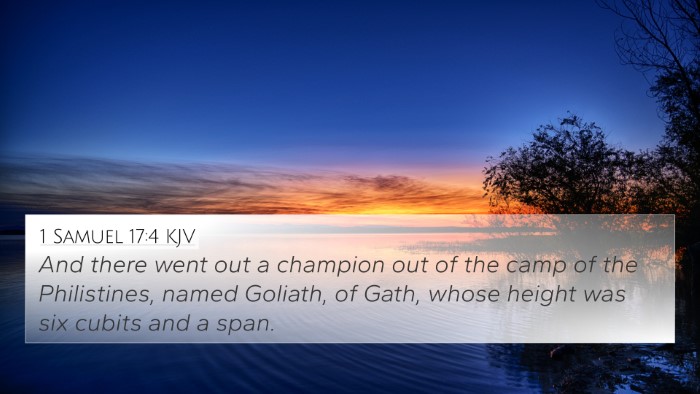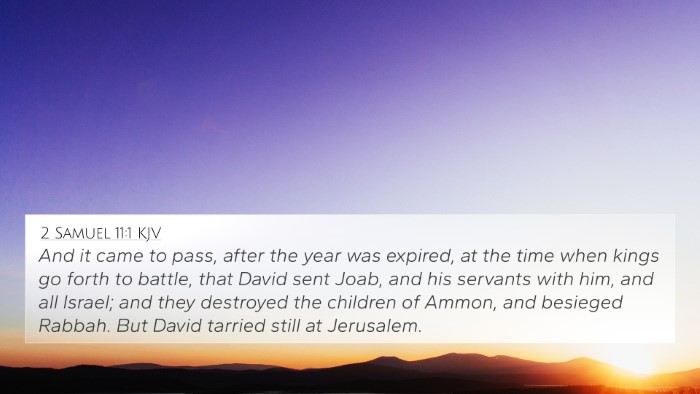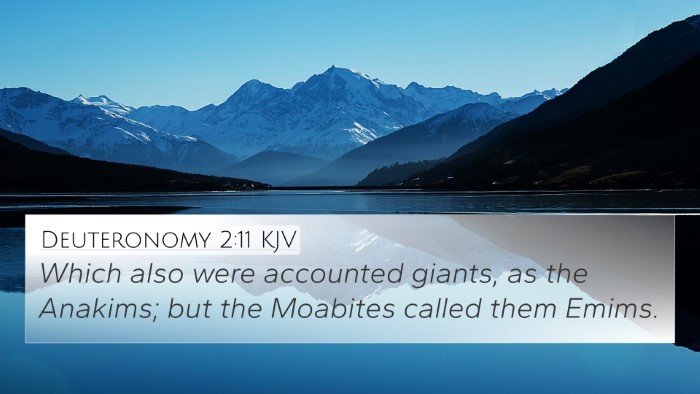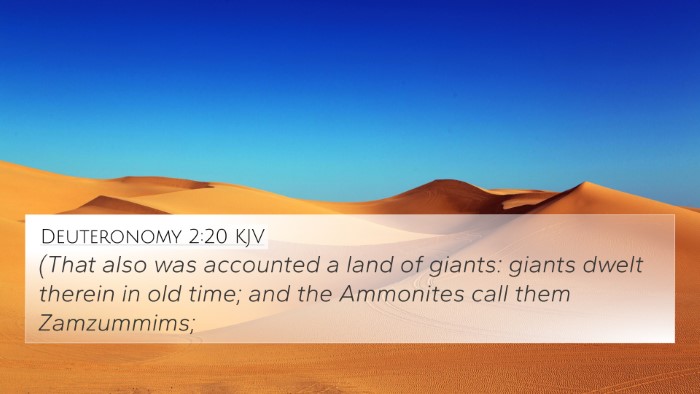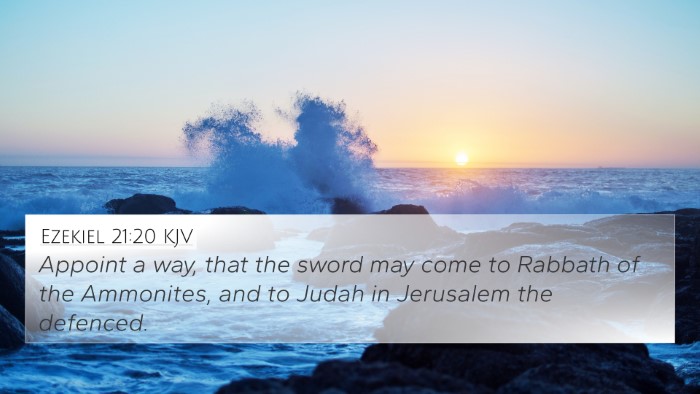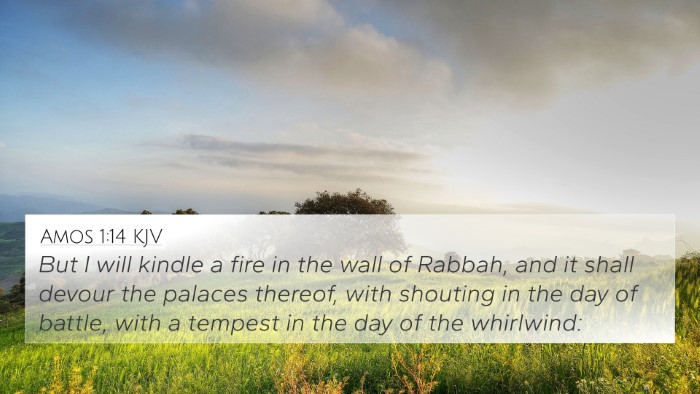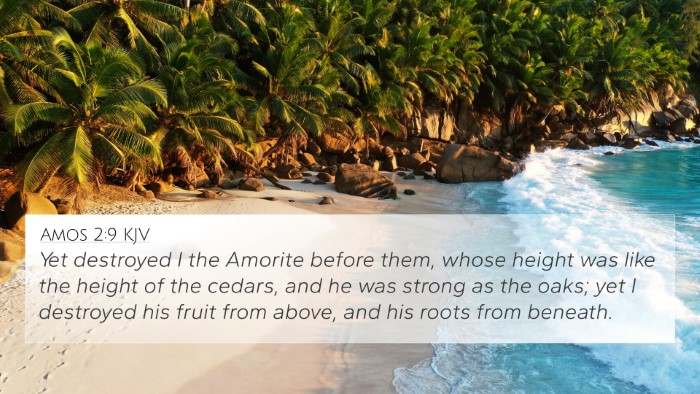Understanding Deuteronomy 3:11
Deuteronomy 3:11 states: "For only Og king of Bashan remained of the remnant of the giants; behold, his bedstead was a bedstead of iron; is it not in Rabbath of the children of Ammon? nine cubits was the length of it, and four cubits the breadth of it, after the cubit of a man."
Summary of the Verse
This verse highlights the stature of Og, the king of Bashan, known as one of the last remnant giants of the ancient world. The reference to his bedstead of iron emphasizes his imposing size and strength. This verse serves as a significant point in Israel's history, showcasing God's power in delivering His people from formidable foes.
Insights from Commentaries
Matthew Henry's Commentary
Matthew Henry reflects on Og’s characterization as a giant, which symbolizes the opposition that Israel faced. He emphasizes that despite Og’s great stature and formidable army, God’s promise of land to His people prevails. This serves as a reminder that human strength is insignificant when measured against God’s purpose.
Albert Barnes' Commentary
Albert Barnes elaborates on the specifics of Og’s bedstead, theorizing on its dimensions to illustrate Og's size. By providing a tangible point of reference, Barnes stresses the exceptional nature of the enemies faced by the Israelites and how God’s intervention was crucial in their conquest.
Adam Clarke's Commentary
Adam Clarke discusses the cultural context of giants in biblical lore and the fear they inspired. He suggests that the reference to such a large bed serves to chronicle the history of Israel’s conquests and instills hope in the reader that even the greatest obstacles can be overcome by faith in God.
Cross-References for Deuteronomy 3:11
- Numbers 21:33-35 - The defeat of Og, the king of Bashan, and his land.
- Deuteronomy 2:20-21 - Discusses the significance of the land of the giants.
- Joshua 12:4 - Identification of Og as one of the last kings of the Rephaims.
- Isaiah 26:14 - Desolation of the giants and their influence on nations.
- Amos 2:9 - Reference to the height of the Amorites as impressive.
- Genesis 6:4 - Speaking on the existence of giants in the earth and their associations.
- Psalms 135:10-11 - Recalling past conquests over powerful kingdoms.
Thematic Connections
The verse emphasizes themes of:
- God’s Deliverance: Shows how God supports His people against seemingly insurmountable odds.
- Faith in Adversity: The narrative of overcoming giants encourages believers to trust in divine strength.
- Historical Context: This verse serves to remember God's past faithfulness in battles and victories.
Comparative Bible Verse Analysis
In a comparative study, Deuteronomy 3:11 can be linked to numerous verses that elucidate the broader theme of divine assistance in the face of giants and adversaries. For instance, the victories recounted in Joshua also highlight God's promise of victory against great foes.
Cross-Referencing Biblical Texts
This verse serves as a pivotal link between the Old and New Testament narratives, showcasing the connection between God's fulfillment of promises and the overarching theme of redemption found throughout Scripture. Thus, examining similar accounts of giants and battles in the Bible enriches understanding and provides insight into God’s unwavering commitment to His covenant people.
Conclusion
Deuteronomy 3:11 encapsulates a historical moment in Israel's journey, while simultaneously reflecting deeply spiritual truths about faith, strength, and God’s redemptive power over life’s enormous challenges. Through the lens of cross-references, one can appreciate the grand narrative of Scripture, drawing connections that illuminate and deepen spiritual engagement.
